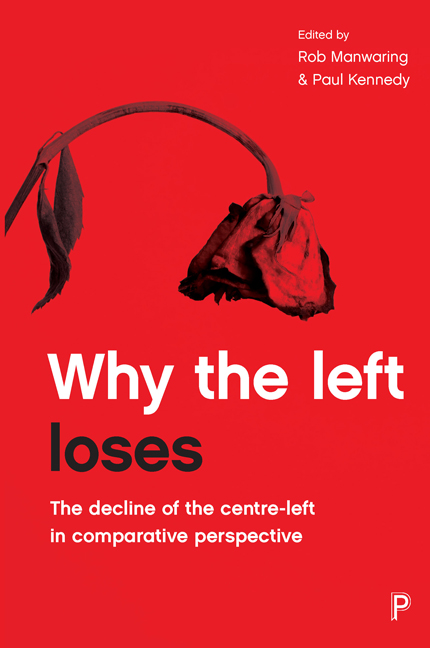Book contents
three - Electoral competition in Canada among centre-left parties: liberals versus social democracts
Published online by Cambridge University Press: 08 April 2022
Summary
In their introduction of What's left of the left, Cronin, Ross and Shoch (2011: 3) discuss how many electable parties in Western democracies could be categorised as centre-lefts. However, these parties are so diverse that it is more apt to talk of ‘centre-lefts’ that include ‘social liberals, social democrats, democratic socialists, progressives, greens, and human rights campaigners’ (Cronin et al, 2011, p 3). Despite the disagreements of these ‘centre-lefts’ on a variety of issues, Cronin et al hold that they share a common commitment to state intervention in the economy, wealth redistribution, environmental protection and individual cultural liberties while recognising the multiple constraints of economic internationalisation.
In Canada, the concept of ‘centre-lefts’ has been particularly pertinent over the last decade. Roughly two-thirds of Canadian voters have values and policy positions that could be broadly defined as ‘leftof- centre’ or ‘progressive’ in Canadian parlance (McGrane, 2015). During the decade of rule by a decidedly right-wing Conservative government under Stephen Harper's prime ministership, no less than four parties emerged as Canada's ‘centre-lefts’ to court this clientele of left-of-centre voters. Unlike other Western countries, where there is a more distinct left/right polarisation in party systems, Canada has two relatively large centre-left parties: the centrist Liberals, that has won successive majority governments during the 20th century, and the fledgling New Democratic Party (NDP), that often comes third in Canadian federal elections.
Scholarly explanations for the Liberals’ dominance of Canadian federal politics abound. The most common explanations point to Canada's lack of an industrial base and lack of strong unions that would accompany that, the effectiveness of the Liberals in brokering a compromise between French and English linguistic groups, and the Liberals’ efficient internal organisation (Carty, 2015; Johnston, 2017). The other two centre-left parties are the social democratic Bloc Québécois, who advocate for the separation of Quebec from Canada, and run candidates only in that province, and the Canadian Greens, who run candidates in all constituencies but routinely struggle to elect even one MP and win more than 5 per cent of the national vote.
Table 3.1, depicting the results of Canadian federal elections from 2006 to 2015, can be found below.
- Type
- Chapter
- Information
- Why the Left LosesThe Decline of the Centre-Left in Comparative Perspective, pp. 39 - 52Publisher: Bristol University PressPrint publication year: 2017

